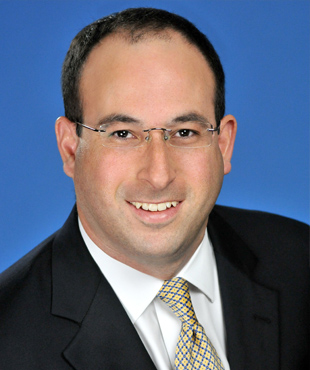Frank Cruz-Alvarez is a Partner with Shook, Hardy & Bacon L.L.P. in the firm’s Miami, FL office, and Britta Stamps is an Associate in the firm’s Kansas City, Mo office.
Certain types of cases warrant injunctive relief for a class, but according to the Second Circuit, a group of past purchasers of a product are not the “class” that Federal Rule of Civil Procedure Rule 23(b)(2) was intended to protect. In Berni v. Barilla S.P.A., et al., the Second Circuit cemented its position that “past purchasers of a product . . . are not eligible for class certification under Rule 23(b)(2).” 964 F.3d 141, 149 (2d Cir. 2020).
The named plaintiffs in Berni brought a putative class action against the manufacturers of Barilla pasta after they purchased one of Barilla’s new pasta products. The plaintiffs alleged that Barilla sold the newer pastas—specialty pastas such as whole grain, gluten free, added fiber, or added protein—in the same size boxes as the older, traditional pastas, yet the boxes of the newer pastas did not contain as much pasta as the older boxes. Because the boxes were the same size, the plaintiffs alleged that consumers would be deceived by the new packaging and believe that all Barilla boxes of the same size would contain the same amount of pasta.
In their slack-fill class action, the named plaintiffs sought, among other things, damages, restitution, and injunctive relief. Before the District Court ruled on Barilla’s motion to dismiss, the parties reached a settlement agreement providing the following relief: (1) Barilla would pay up to $450,000 in fees to class counsel and the named plaintiffs; (2) all class members would release Barilla from future claims; and (3) Barilla would include a minimum “fill-line” on its boxes in the future, showing how much pasta was contained inside, along with language on the boxes about how its pasta is sold by weight rather than volume. Under the agreement, then, the only relief provided to the entire class was the “fill-line” and disclaimer language changes to Barilla’s boxes, both of which constitute injunctive relief.
An objector argued during the Final Approval hearing that a group of past purchasers are not eligible for injunctive relief. The District Court rejected the objector’s arguments and certified the class of past pasta purchasers under Rule 23(b)(2). The objector appealed the certification decision, asking the Second Circuit to determine whether “each of the pasta purchasers [are] likely to be harmed by Barilla in the imminent future absent injunctive relief.” Id. at 147.
The Second Circuit sided with the objector and “conclude[d] that such future harm is not likely, and that, as a result, the injunctive relief sought would not provide a remedy for all members of the class.” Id. The court first determined that the plaintiffs alleged a past harm in light of the fact that they were allegedly deceived by the product packaging in the past. Building on that conclusion, the court reasoned that past purchasers are not likely to “encounter future harm of the kind that makes injunctive relief appropriate.” Id. The court pointed out that past purchasers will not necessarily buy the product again, and even if they do, they will not again be deceived by the size of the boxes. Therefore, at least some (and perhaps all) of the class members would receive no actual benefit from the relief provided by the settlement, which did nothing to redress their past harms despite paying class counsel $450,000. While the relief to each class member in a Rule 23(b)(2) class action need not be identical, the court noted that each class member must receive some benefit.
Recognizing that lower courts have attempted to delineate exceptions to allow similar putative classes to proceed, the Second Circuit addressed the “Catch-22” that only allows a consumer to bring suit after she has suffered an injury, but precludes the consumer from obtaining an injunction to stop the deceptive conduct in the future. Nevertheless, the court held that “an equitable exception to Rule 23(b)(2) simply does not exist, and courts cannot create one to achieve a policy objective, no matter how commendable that objective.” Id. at 149.
This crossroads of Article III standing and certification of an injunctive-relief class look different depending on which Circuit examines the question. Like the Second Circuit, the Third Circuit held that a past purchaser of a product was well aware of the risks associated with the product, and therefore did not have standing to seek injunctive relief. In re Johnson & Johnson Talcum Powder Products Mktg. Sales Practices and Liab. Litig., 903 F.3d 278, 293 (3d Cir. 2018).
In contrast, the Ninth Circuit has held that “misled consumers may properly allege a threat of imminent or actual harm sufficient to confer standing to seek injunctive relief. A consumer’s inability to rely on a representation made on a package, even if the consumer knows or believes the same representation was false in the past, is an ongoing injury that may justify an order barring the false advertising.” Davidson v. Kimberly-Clark Corp., 889 F.3d 956, 961 (9th Cir. 2018). Although Davidson did not explicitly contemplate this question through the lens of a Rule 23(b)(2) class, lower courts in the Ninth Circuit have applied Davidson to certify Rule 23(b)(2) classes of past purchasers. See, e.g., In re Coca-Cola Prods. Mktg. and Sales Practices Litig., 2020 WL 759388, at *6-7 (Feb. 14, 2020); Hilsley v. Ocean Spray Cranberries, Inc., 2018 WL 6300479, at *20 (S.D. Cal. Nov. 29, 2018).
Although the Supreme Court declined to review Davidson in 2018, the Second Circuit’s latest Berni decision could once again bring Article III standing in the context of a Rule 23(b)(2) class to the Supreme Court’s attention. In the meantime, settling parties should steer clear of settlements that provide only “corrective advertising” to class members, and focus instead on redress of the alleged past harm to those consumers.


